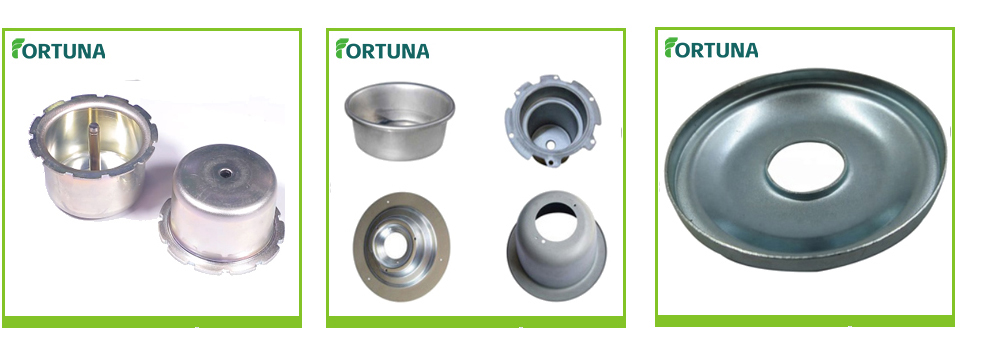The Deep Drawn Metal Stamping
The stamping process is considered deep drawn stamping or deep draw, when a part is pulled(drawn) into a die cavity and the depth of the recess equals or exceeds the minimum part width. Deep drawing uses radial tension-tangential compression to shape the metal.
This process transforms flat sheet metal, or blank, into a hollow vessel that may be cylindrical or box-shaped, with straight or tapered sides or a combination of straight, tapered and curved sides.
Deep Draw Stamping Modifications
This from of stamping usually involves other forming operations to complete the part such as: beads, ribs and flanges.
Bulging: the process of expanding the walls of a cup, shell or tube with an internally expanding segmental punch or a punch composed of air, liquids, semi-liquids or of rubber and other elastomers; this expansion may be symmetrical or non-symmetrical.
Coining: a closed -die squeezing operation in which all surfaces of the work are con fined or restrained.
Curling: forming an rolled edge at the open end of a part.
Dimpling: localized indent forming, so as to permit the head of rivet or a bolt to fasten down flush with the surface of the metal.
Embossing: a process that produces relatively shallow indentations or raised designs with no significant change in metal thickness.
Extruding: a process that produces relatively shallow indentations or raised designs with no significant change in metal thickness.
Holes: a shaped portion of metal is cut from the drawn part using conventional, extruding, or piercing punches.
Ironing: operation in which the thickness of the shell wall is reduced and its surface smoothed.
Deep Draw Stamping Process
Step1: Determine Scope
Step2: Cutting Blanks
Step3: Starting Cup
Step 4: Keep Drawing
Step 5: Custom features: We produces custom deep draw parts for our customers, including a variety of features:
*Beading
*Burnishing
*Chamfering
*Coining
*Embossing
*Flange forming
*Ironing
*Marking
*Multiple side piercing
*Shaped flange trimming and so on
Deep Draw Stamping Materials:
Deep Draw stamping offers many advantages including lower costs for high volume production and the ability to create parts with a high strength-to-weight ratio. It’s an ideal metal forming method of cylindrical parts and components where there is a minimal emphasis on surface marks.
Our deep draw stamping capabilities work with a variety of metals, including:
*Cold rolled Steel
*Stainless steel, 400 series and 300 series
*Aluminum
*Copper/Alloy
*Brass
*Iron and so on.
